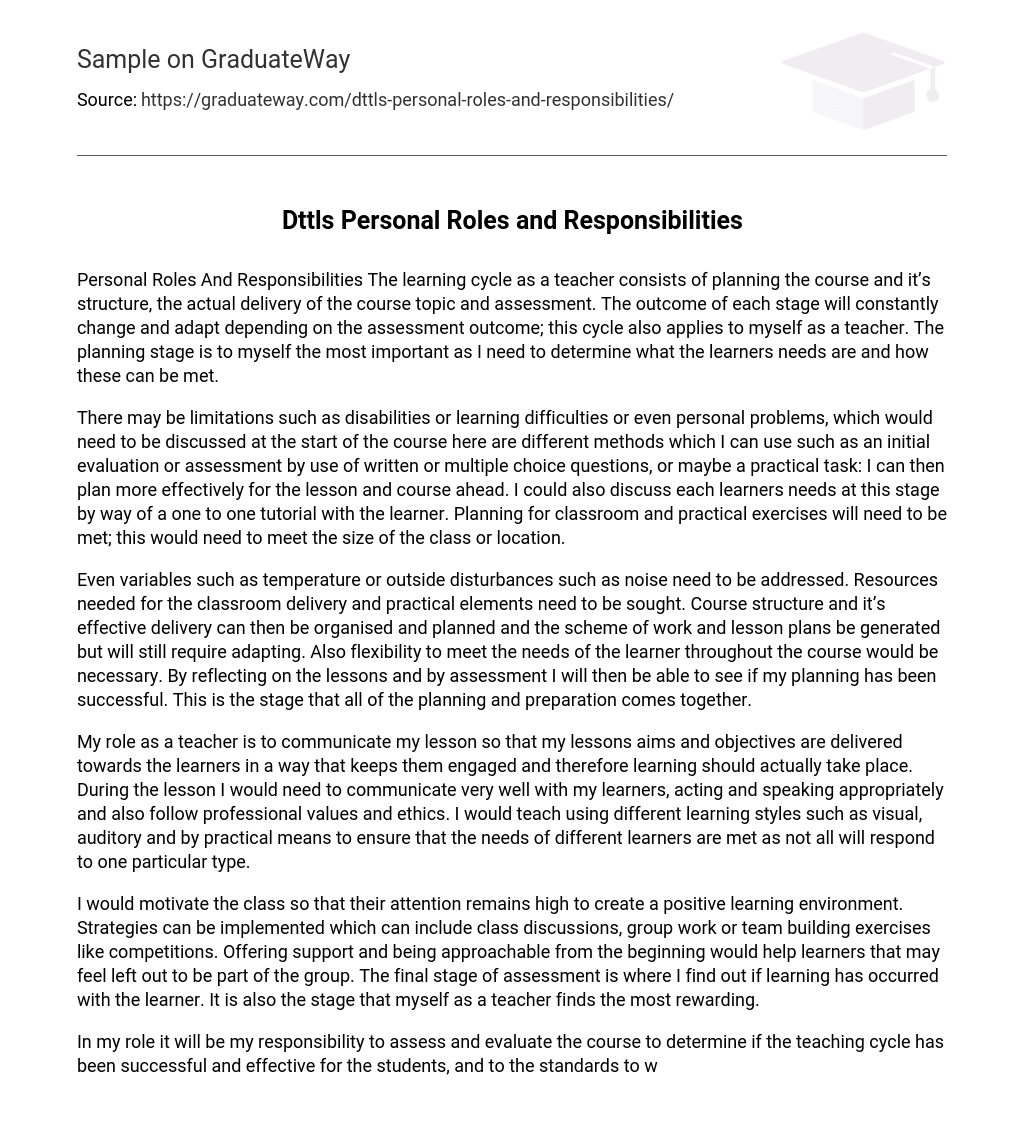Personal Roles and Responsibilities
The learning cycle for a teacher consists of planning the course structure, delivering the course topic, and assessment. The outcome of each stage will constantly change and adapt depending on the assessment results. This cycle also applies to me as a teacher. For me, the planning stage is the most important because I need to determine what the learners’ needs are and how they can be met.
At the start of the course, it is important to discuss any limitations that learners may have, such as disabilities, learning difficulties or personal problems. To address these issues effectively, I can use different methods such as an initial evaluation or assessment through written or multiple-choice questions. Alternatively, a practical task could be used to identify areas that require attention. By understanding each learner’s needs through one-to-one tutorials, I can plan more effectively for the lesson and course ahead.
To ensure successful delivery of classroom and practical exercises, planning must consider class size and location.
Even variables such as temperature or outside disturbances, such as noise, need to be addressed. Resources needed for classroom delivery and practical elements must be sought. Once these are in place, the course structure and its effective delivery can be organized and planned. The scheme of work and lesson plans can then be generated but will still require adaptation. Additionally, flexibility to meet the needs of learners throughout the course is necessary. By reflecting on lessons and assessing their effectiveness, I will then be able to determine if my planning has been successful. This is the stage where all of the planning and preparation come together.
As a teacher, my role is to effectively communicate lesson aims and objectives to engage learners and facilitate learning. This requires clear communication, appropriate behavior and language, and adherence to professional values and ethics. To accommodate diverse learning styles, I utilize visual, auditory, and practical methods.
I would motivate the class to maintain their attention and create a positive learning environment. Strategies such as class discussions, group work, or team-building exercises like competitions can be implemented. Being approachable and offering support from the beginning would help learners who may feel left out become part of the group. The final stage of assessment is where I determine if learning has occurred with the learner. As a teacher, this stage is also the most rewarding for me.
As part of my role, I am responsible for assessing and evaluating the course to determine its effectiveness in meeting the standards set for student outcomes. Once the assessment stage is complete, I can evaluate the outcomes and make necessary changes to course planning or delivery. By continuously adapting and evaluating, we can make the learning cycle more effective. This allows me to fulfill my responsibilities as a teacher and ensure that students receive a high-quality education.





